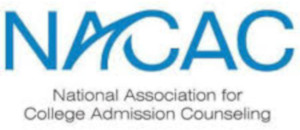A college applicant is six feet tall. They are also 1.83 meters from head to toe as well as 183 centimeters. They measure .0011 miles, not to mention 1.93 x 10-16 light years. On their college applications, the student might point out that they stand just under two billion nanometers. And what a lot of nanometers that is.
Similarly, in the activities section of the application, the high school senior might list membership in the English Honor Society, the National Honor Society, and Mu Alpha Theta (the math honor society.) Additionally, unweighted grade point average (really high!), weighted gpa (even higher!) and the number of advanced placement course (a bunch! Where did you think that astronomical weighted gpa came from?)
The applicant will also be graduated near the top of her class. Top ten percent, first decile! And an AP scholar to boot!
Of course, all these numbers say exactly the same thing. These are achievements of which the applicant may be justifiably proud. But once your neighbor has told you that they paid two hundred forty-thousand dollars for their new car, you might be less interested in learning the price of the vehicle in Deutschmarks, Dinars, Yen, Euros, Pounds, Liras, and Rials and yes, I am aware that Deutschmarks and Liras have now been subsumed into Euros, but if this neighbor is truly focused on boring you to the point of incontinence by repeating the same information why not go back to antiquated currencies?) Kids with high grade point averages tend to be graduated at the top of their class. And the sun sets in the west. Details at 11:00.
Colleges play the same repeated information game selecting students from their early decision pool. At most colleges, the percentage of kids admitted early decision is higher than the percentage of kids admitted regular decision. Amherst said yes to 24% of early decision applicants* but only 8% of students who applied regular decision were admitted. In round numbers, Northwestern admits 25 % of early decision applicants and only five percent of regular decisions kiddos. So if Susie applies to Northwestern early decision, is she five times as likely to be admitted? Is she significantly improving her chances by applying early?
Two words: “Puh” and “lease.” One other word: “nah.”
Pundits jump up and down pontificating about “demonstrated interest” and “commitment.” Susie got in because her ED application communicated that Northwestern was her first choice. But there’s another way to interpret the highly rejective college ED/RD data.
What does Susie’s early application communicate and how is this information conveyed? A quick peek at her application reveals her home address (a Zillow search suggests a five-million-dollar value); the occupation or her parents (they make a good living); the educational attainment of her folks (they have graduate degrees); and the name of her private high school (for $45K/year you too can send your child there.) Summary: early decision applicants can afford to pay the sticker price. There is no new information in any of those responses on the applications. E.D. = home address = parents willing to pay full tuition = somoleans, piles of.
Which is to take nothing away from Percy’s achievement and ability, but if all those honor societies and sky-high grade point averages disclose the same thing (“high positive correlation” is harder to spell) what is it that colleges value? What distinguishes a successful applicant. Again, two words: “Moo” and “lah.”
On the subject of repeated and hyperbolic information, here are some words from the activities section that don’t impress anyone. Provided developmentally appropriate and emotionally supportive cognitive enhancements for coming-of-age children in a safe, enhanced space.
No, you didn’t. You babysat. And good on ya. Babysitting is awesome. But you didn’t build a nuclear submarine in your basement and food insecurity in this country is still a thing. You took care of a five-year-old while her parents went to a movie. I’m glad that nice young couple got to see a film. But, babysitting and a successful moon landing are distinct. Pascal said, I have made this [letter] longer than usual because I have not had time to make it shorter. You have had 17 years to determine that you were going to eradicate infectious diseases worldwide or hike all the 20,000+ foot mountains in Nepal. Just go ahead and tell the truth about how you earn your kick around money.
Speaking of childcare, can the parents of college applicants agree that we ought to be consistently nurturing our children rather than constantly measuring them? Yes, they are going to grow, but their heights will remain relentlessly the same whether reported in meters, miles or light years. Loving our kids for who they are rather than who they pretend to be is always the correct measurement.
* The data were compiled by and graciously shared by my good friends and colleagues, Jeff Levy and Jennie Kent.








One thought on “Does Your Child Measure Up?”
Interesting point! I suppose all those academic and extracurricular activities are for naught for semi-selective institutions that don’t have gigantic need based financial aid budgets. Although, for the ultra-selective institutions, I think moola may not matter as much, especially if you meet a certain institutional priority.